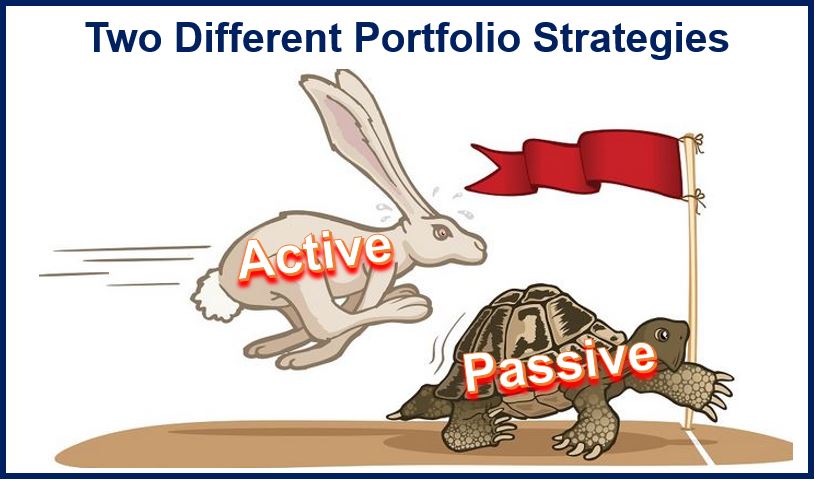A passive portfolio strategy focuses on maximizing diversification with little expectational input. A passive portfolio fund essentially mirrors a market index. It is the opposite of an active management portfolio strategy, which aims to beat the market with several investing strategies and trading decisions.
Passive portfolio strategy is also known as ‘passive investing’, ‘passive strategy’ and ‘index investing’.
It follows the efficient market hypothesis, which states that financial markets are ‘informationally efficient’.
What this means is that the strategy assumes that the marketplace provides all information regarding the price paid for securities, and as a result does not try and beat the market by buying ‘mispriced’ securities.

In passive investment management, no attempt is made to distinguish attractive from unattractive securities, forecast their prices, time markets or market sectors.
Passive managers expect average returns on various asset classes – they invest in broad sectors of the market. Asset class refers to a broad group of securities that act in a similar way in the marketplace, such as stocks, fixed-income securities and cash equivalents.
Advocates of a passive portfolio strategy believe that the best and most risk free strategy is to invest in index funds, which have historically performed better than most actively managed funds. Investors who use this strategy are minimally involved in directing the portfolio.
Oliver Pursche wrote in Forbes in 2013 that active management of portfolios performs better than passive management.
Mr. Pursche wrote:
“Active management is superior by default because passive management is only theoretically possible.”
“In my 20-plus years managing money I have not met a single investor who put all of their cash into a broad market index, ad infinitum. Rather, they combine them with bond indexes or funds, or peel back on the large-caps inherent in SPY, and add a concentration of small- or mid-cap focused investments. And by doing so, they become – de facto – active managers.”
However, keep an eye on your mutual fund manager. A study found that mutual funds that were in the top quartile of all the US’ mutual funds in September 2010, were very likely to be in the bottom three quartiles within two years (90% likelihood). When you compare 2008 with 2012, there’s a 99.82% chance that those in the top quartile at the beginning of the period found themselves in the bottom three quartiles at the end.
which.co.uk (the UK’s Consumer’s Association) describes passive management as follows:
“Passive investment funds will simply track a market, and charge far less in comparison. The funds are essentially run by computer and will buy all of the assets in a particular market, or the majority, to give you a return that reflects how the market is performing.”
The consumer’s association quotes a study of the UK ALL Companies sector which showed that at the end of 2010, only 24% of actively managed funds managed to outperform the benchmark stock market over the previous ten years.
However, which.co.uk then adds “If you pick the right actively managed fund, you could make much more money than you would with a tracker fund or ETF (exchange traded fund). There are some very skilled managers, who have built up reputations of consistent high returns and can be worth the fees you pay for them.”
Video – Passive Investing Theory
